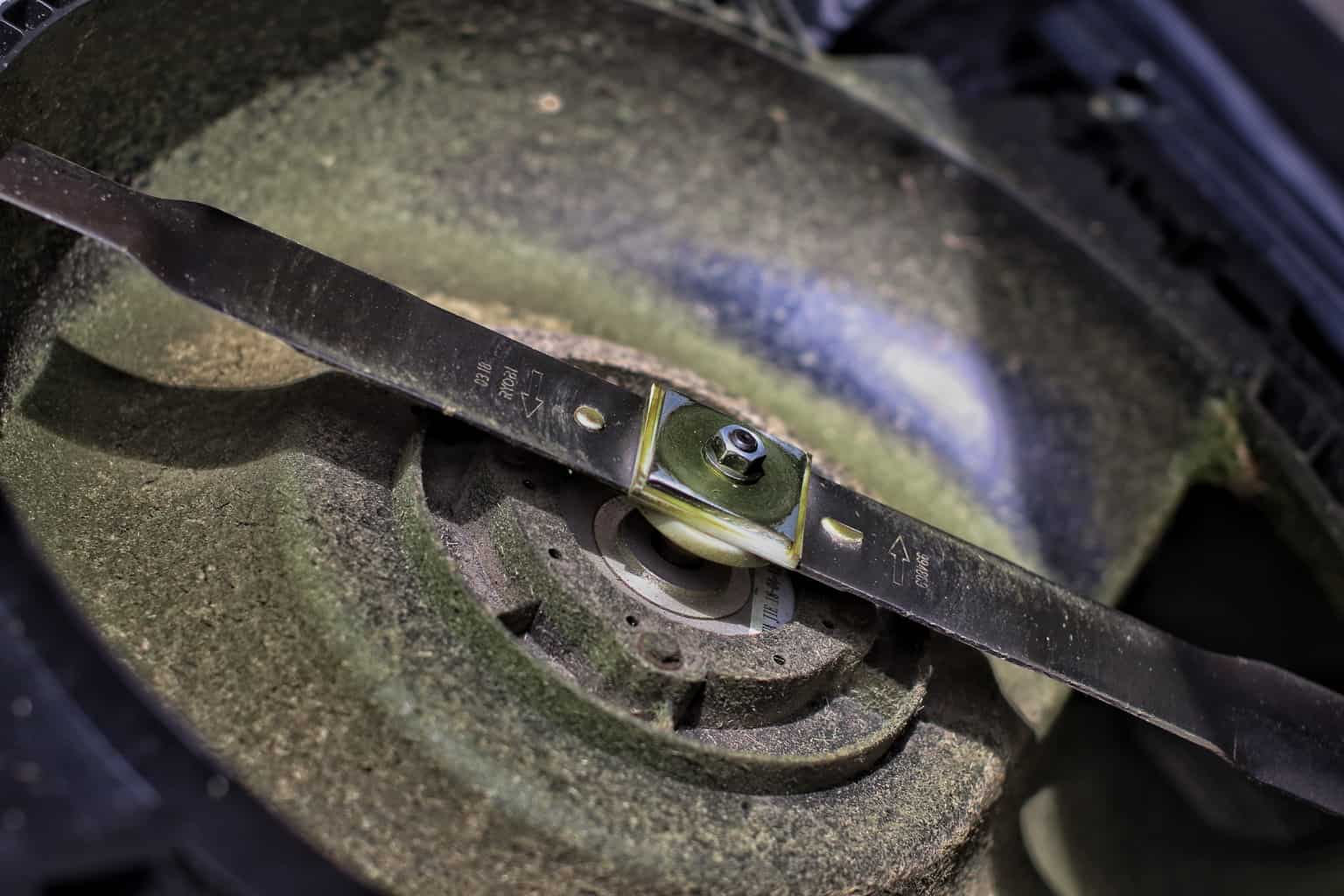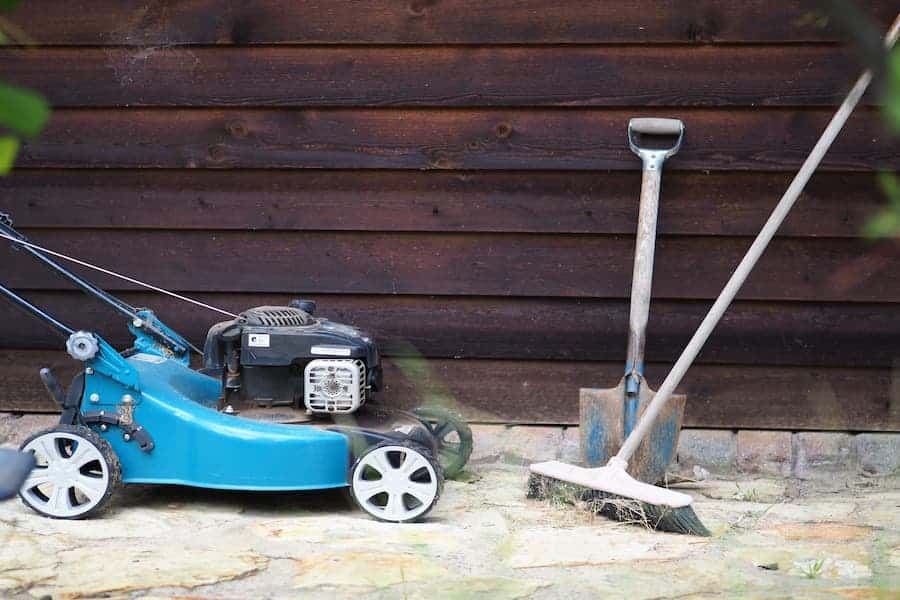Lawnmower blades should be approximately as sharp as a butterknife. Learn why lawnmower blade sharpness matters to the health of your lawn, and how to tell the difference between a blade that is too dull, too sharp, or just right. This article will explain further how sharp should lawnmower blades be.
Lawnmower Blade Sharpness and Lawn Health
The blades on your lawnmower whirl around at high speeds, chopping blades of grass with every rotation. Any time you cut grass, you’re wounding the plant and creating an opportunity for disease to enter your lawn.

The quicker your lawn heals from its most recent mow, the less time it has to contract a disease and the healthier it will be. Healthy grass means a healthy and beautiful lawn. Sharp mower blades cut cleanly through each blade, allowing the grass to heal quickly.
Using a sharp mower blade is important to the health and appearance of your lawn. When you mow with a blade that is too dull, a range of unpleasant side effects can be expected, including:
- A jagged, raggedy appearance
- Yellowing and browning in the days following the mow
- Torn-up chunks of grass, where the plant got wrapped around the blade and was pulled out by the roots
Thicker grass places an even greater emphasis on the mower’s blade.
What’s more, a dull-bladed lawnmower is much harder to push, making the tedious chore of mowing take even longer.
Can Lawnmower Blades Be Too Sharp?
- Very thin blade edges can roll over on themselves, presenting a dull cutting surface.
- Super-sharp lawnmower blades go dull more quickly than those that are appropriately sharpened.
- Extra-sharp blades are more likely to become nicked or chipped when they encounter pebbles or other debris.
Avoid the consequences of a dull blade and the hassle of an overly-sharpened blade by frequently checking the cutting surface of the blade as you sharpen. The blade should slope at a 30-degree angle, and be about as sharp as a butterknife. If your lawnmower blade cuts your finger, it is too sharp.
How Often Should I Sharpen Lawnmower Blades?
How often you need to sharpen your mowing blades depends on your lawnmower usage, but there are a few general tips to guide your decision:

- Replace or repair damaged blades immediately. Never cut your lawn with a damaged blade. If you hit a rock while mowing, check the blade for damage and sharpen if necessary.
- Even the best lawn mower blades should have their blades sharpened at least once per year.
- Stop mowing as soon as you notice a drop in performance and make a plan to sharpen your blades.
- A freshly sharpened blade should cut well for 20 to 25 hours. If your blade goes dull earlier than this, it could be a sign that you’ve oversharpened it.
- Once you’ve accumulated 25 hours of use on a blade, it should be sharpened whether you’ve noticed a drop in performance or not.
How to Check Lawnmower Blade Sharpness
Follow these steps to check how sharp your lawnmower blade is.
- Look at your lawn. Often, the first sign that your blade is in need of sharpening comes from the lawn itself. Brown, fraying edges, evidence of tearing, and uneven blade height after cutting are all telltale signs to schedule a sharpening.
- Remove the blade from the lawnmower. Empty the fuel from the lawnmower and tip it carefully on its side. Use a block of wood to keep the blade from moving. Loosen the retaining bolt by turning it counterclockwise. Note: it is possible to sharpen the blade without removing it from the mower.
- Clean the blade. Removing debris and rust from the surface of the blade will make it easier to check on its condition. Use acetone, mineral spirits, or another degreaser/solvent to clear sticky sap from the blade.
- Inspect the blade. A sharp mower blade will have a shiny edge and a smooth profile from edge to edge.
- Check the angle. You want the cutting edge to slope downward, away from the body of the blade, at about a 30-degree angle.
Ensure that as you re-install the blade it is balanced, as an unbalanced blade can cause a lot of the same problems that a dull blade causes.
Conclusion
Lawnmower blades must be sharp, but not as sharp as a razor. Too dull, and they’ll mangle your lawn. Too sharp, and the blades will accumulate chips and nicks before going prematurely dull. Sharpen blades after 25 hours of usage or when you notice a drop in performance.